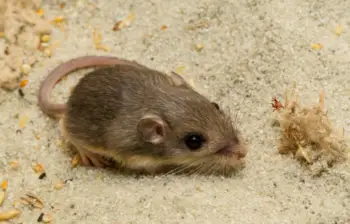ESCONDIDO — On Feb. 8, San Diego Zoo Wildlife Alliance will attempt to secure a Guinness World Records title for “Oldest Living Mouse in Human Care” to recognize Pat, a Pacific pocket mouse fondly named after actor Patrick Stewart.
Pat was born on July 14, 2013 at the San Diego Zoo Safari Park, in the first year of the organization’s Pacific pocket mouse conservation breeding and reintroduction program. He is currently 9 years and 5 months old. The Pacific pocket mouse is North America’s smallest mouse species.
Debra Shier, Ph.D., Brown Endowed Associate Director of Recovery Ecology at San Diego Zoo Wildlife Alliance, who established and continues to oversee the Pacific pocket mouse conservation program, will be featured speaker at the celebration event, where an adjudicator with Guinness World Records will officiate at Beckman Center for Conservation Research at Escondido’s San Diego Zoo Safari Park.
This recognition would be a win for the small, often-overlooked species that plays a critical role in its ecosystem. Drastic Pacific pocket mouse population declines prompted the establishment of San Diego Zoo Wildlife Alliance’s conservation breeding and reintroduction program in 2012, to help save the species from extinction. San Diego Zoo Wildlife Alliance carries out a breeding program and studies behavior, ecology, genetics, microbiome and physiology to best support genetically diverse, healthy and behaviorally competent mice that are well prepared for reintroduction into their native habitat.
Last year, 2022, was a historic breeding season for North America’s smallest mouse. At the conservation breeding center, San Diego Zoo Wildlife Alliance recorded the earliest breeding event and pup birth in the history of the program—and the team helped with producing a record 31 litters, for a total of 117 pups during the spring and summer months. Many of these mice will be reintroduced into native habitat this spring.



